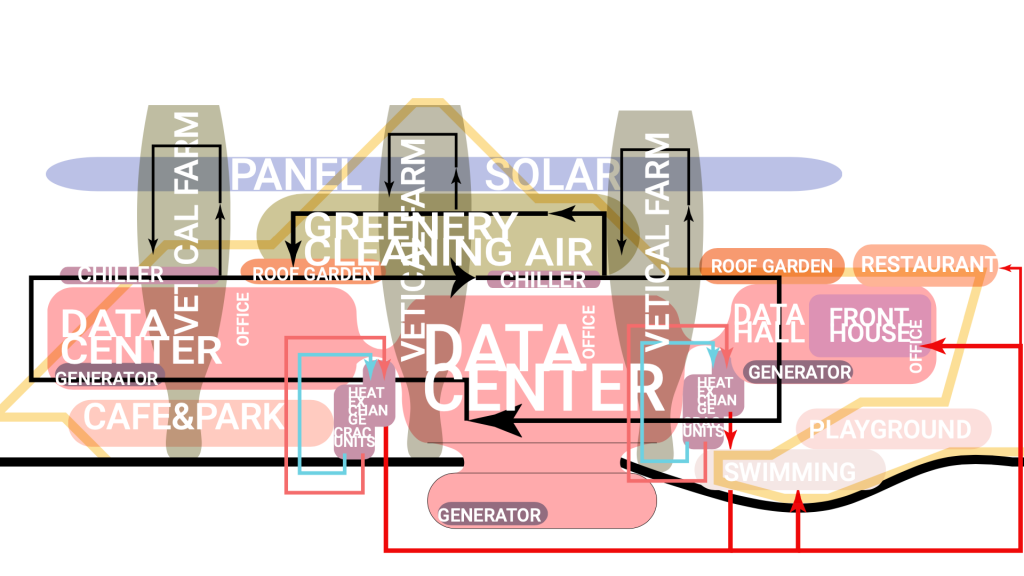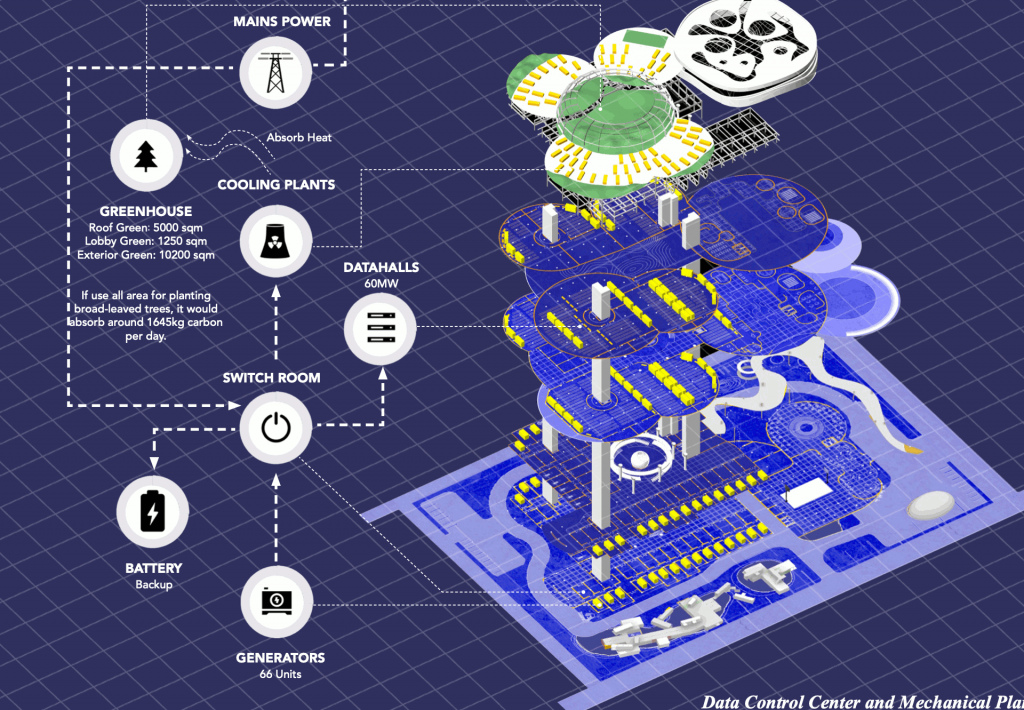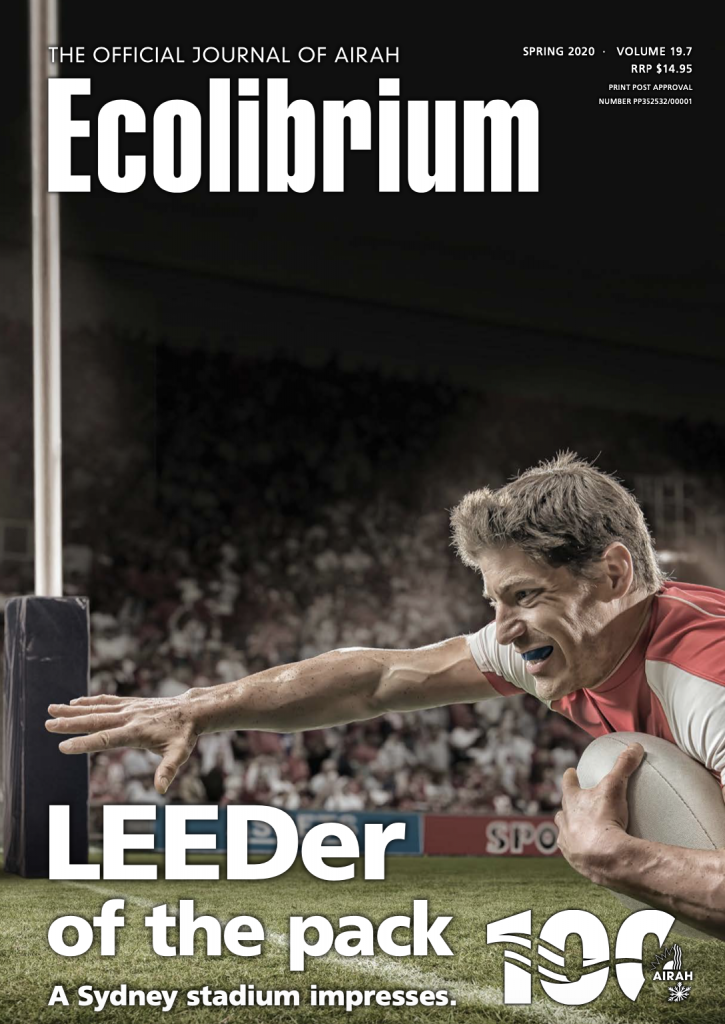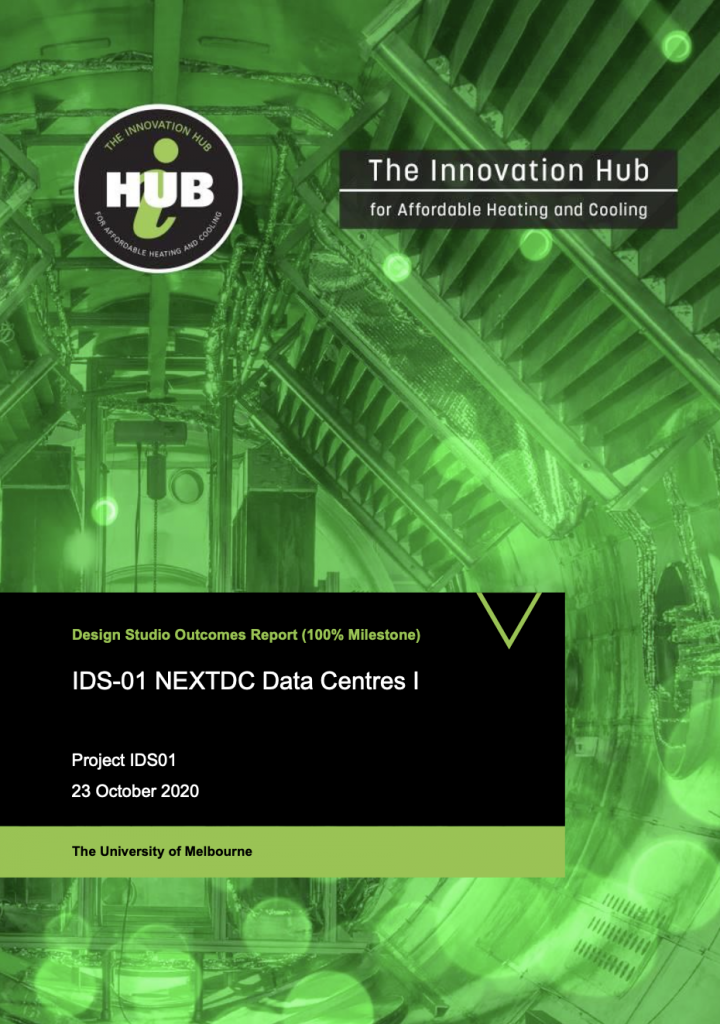This post presents research on Integrated Design using Data Centres as a case study. The work was undertaken as a part of ‘i-Hub’, a ‘towards zero carbon’ HVAC industry initiative initiated by The Australian Insitute of Refridgeration and Air Handling (AIRAH), and funded by The Australian Renewable Energy Agency (ARENA). The research was carried out in the Melbourne School of Design (MSD), at The University of Melbourne. Full research report downloads are available at bottom of this page.

Data Centre Energy Loop study – Kun Feng
Significant cultural barriers exist in the design of sustainable buildings. The root cause of many of these barriers is the relationship of the engineering and architectural disciplines in the design environment. The i-Hub Integrated Design Studios aim to change this.
The studios explore the design of different building typologies focusing on the collaborative relationships between architect, engineer and client.
The rapid and continuing growth of the ICT industry means that data centres will be one of the worlds large energy users in the future. Significant opportunities exist for building strategies involving energy capture, generation (through renewables), and waste heat recovery.
IDS-01 explored Data Centre Design with innovative data centre operator NEXTDC as the client. The studio work was lead by Toby Reed at MSD and supported by Aurecon Engineers and Greenbox Architects.

Data centre Exploded Isometric – Fan Wei
Sixteen architectural students explored design solutions that integrated architecture and engineering with end goals of better and more sustainable technical performance as well as aspects such as community engagement and social value.
The following findings/observations came from the studio:
Facilitating Integrated Design:
- There is a high level of excitement and buy in to the concept of integrated design meaning simply articulating this as a project goal achieves some gains.
- Integrated design requires a ‘design co-author’ mindset in all participant designers.
- Definition of common goals is a key priority with tasks set at a detailed level as well as aspirational level.
- Integrated design benefits from active third-party curation.
- Integrated design happens over a limited time window.
- Design innovation emerges from consolidating competing interests.
- Architects are initially often not familiar with the implications of different technologies on their project layout.
- Academic education plays a key role, in particular when bridging the Architect/Engineer divide.
Sustainable Data Centre design
- Relative renewable energy contributions to data centres are small (1.0 – 2.5% of overall energy consumption) due to the extensive (80+ MW) base loads. ‘Net Zero’ targets are impossible to achieve via technology interventions.
- Capture and recovery of waste heat through adjacent symbiotic uses such as aquatic centres and greenhouses provides opportunities for better community engagement and potential competitive edges for data centre developers in competing for sites.
- Modular construction offers benefits in expansion and periodic technology updates.
There following magazine article published in ‘Ecolibrium’ provides an overview:
Downloads (opens pdf in new tab)

The full report including learnings on how to facilitate integrated design as well as technical findings on the potential for sustainable data centres is located here:

University of Melbourne Researchers
- Dominik Holzer (Senior Lecturer, MSD)
- Brendon McNiven (Enterprise Professor, MSD)
- Lu Aye (Professor, MSE)
We would be happy to take comments, field queries or provide further information. Please contact brendon.mcniven@unimelb.edu.au with any requests.

